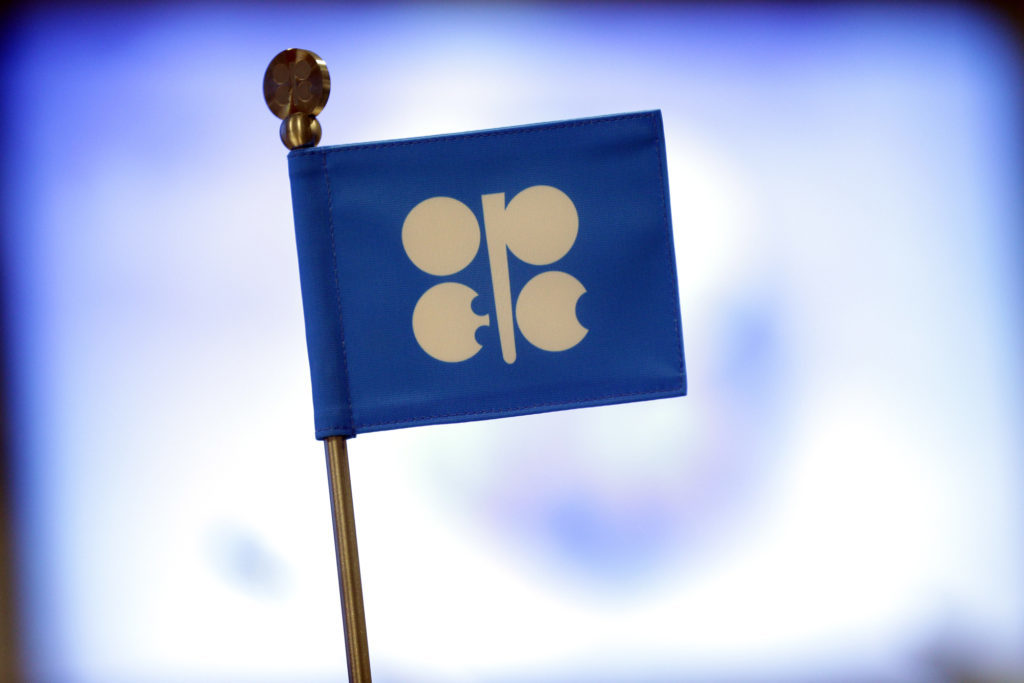
Oil fell after OPEC+ agreed to boost production into 2022, resolving an internal dispute that had shaken the alliance.
Global benchmark Brent shed more than 1%, while West Texas Intermediate dipped. The Organisation of Petroleum Exporting Countries and its allies will add 400,000 barrels a day each month from August until all its halted output has been revived. The deal also gives Saudi Arabia, the UAE, Iraq, Kuwait and Russia higher baselines against which their cuts are measured from May 2022.
The complex pact, announced at the weekend after a spat between Saudi Arabia and the United Arab Emirates, gives traders a better view of how quickly the cartel will restore the 5.8 million barrels a day it’s still withholding, since making deep cuts last year in the initial stages of the pandemic. It also resolves longstanding grievances that tested the unity of the alliance.
After soaring 45% in the first half, Brent hit a turbulent patch this month. The bitter wrangle at OPEC+ spurred confusion among investors about the group’s plans for output just as the spread of the delta variant sowed concern about the potential impact of fresh outbreaks on demand. Still, with stockpiles being drawn down, market watchers including the International Energy Agency have said that additional barrels were needed to plug a projected shortfall.
“The deal reached over the weekend is likely to lead to some further weakness in the short term, as investors unwind positions on the prospects of higher supply,” said Daniel Hynes, senior commodities strategist at Australia & New Zealand Banking Group Ltd. Ultimately, the market is still relatively tight, which should see a relatively short-lived sell off, he said.
While the OPEC+ agreement spans more than a year and covers millions of barrels of production, it remains a flexible arrangement. The alliance will continue to hold talks every month, including a review of the market in December. It could adjust the schedule if required, according to Saudi Energy Minister Prince Abdulaziz bin Salman. The next gathering will be Sept. 1.
Prices
Brent for September settlement was 1.3% lower at $72.62 a barrel on the ICE Futures Europe exchange at 8:41 a.m. in Singapore.
WTI for August delivery fell 1.3% to $70.88 a barrel on the New York Mercantile Exchange.
Goldman Sachs Group Inc. said that the deal would support its constructive view on oil, while cautioning that near-term prices may “gyrate” amid concern about the delta variant. The group’s planned increase in supply was “moderate” and would keep the market in deficit, the bank said in a report.
Brent’s prompt time spread was little changed at 63 cents a barrel in backwardation, a bullish pattern with near-dated prices trading above those further out. That’s down from 74 cents a week ago.
The delta variant is still on the ascendant, especially among the unvaccinated, with some countries reimposing curbs. In Asia, Indonesia, Thailand, South Korea, Vietnam and Singapore are all dealing with outbreaks. Elsewhere, the UK on Saturday reported the most cases since January.
Overall, global demand is holding up as restrictions ease despite increasing virus cases across Asia, said Hynes. This should keep demand strong even as the market remains cautious as to how long this can last, he added.
Oil traders will also be on alert in the coming days for Iran’s first crude export from outside the Persian Gulf and beyond the Strait of Hormuz. The Islamic Republic plans to ship a cargo of crude from Jask in the Gulf of Oman, according to Vahid Maleki, director of the Jask Oil Terminal.